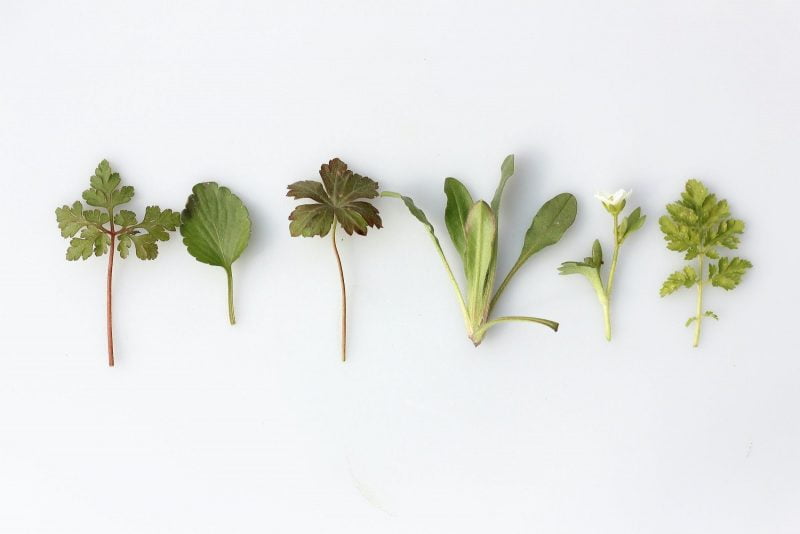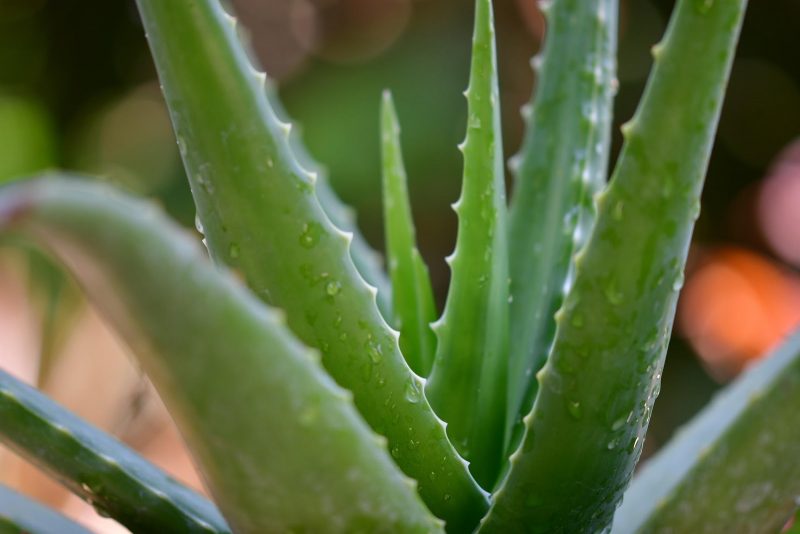
By Guest Writer Kathy Miller,
Mother Nature helped humanity survive throughout the ages. Medicinal plants are one of those countless gifts nature has given us. Since prehistoric times, traditional medicine practices trusted and tried these wonder herbs. Plants comprise hundreds of potential phytochemicals and phytonutrients are beneficial for your health.
Humankind has treated common ailments using medicinal plants for thousands of years. You might have seen grandma’s kitchen and garden filled with herbs. It is possible that whenever you felt under-weather, she might have brewed a concoction to help with it. If you want to try growing these medicinal plants – here are 12 Medicinal plants to grow at your home for treating common ailments.
- 1) Aloe Vera
Aloe vera (Aloe barbadensis miller), the succulent plant species is an evergreen perennial, which originates from the Arabian Peninsula. Aloe in Arabic means “shining bitter substance,” and vera in Latin means “true.” Greek scientists called aloe as “universal panacea,” and Egyptians named it “the plant of immortality.”

Growing Aloe vera is super easy. Just plant the cuttings in dry soil in a pot or garden. Make sure the soil has good drainage after all the plant grows in dry conditions very well. The plant is from a family of cacti; it won’t stand healthy in too much water.
Health Benefits –
- Aloe has excellent healing, immune-stimulating, anti-inflammatory, antiviral, laxative, and anti-aging properties.
- Consuming aloe gel helps in alleviating common digestive disorders like acid reflux and heartburns.
- One study found Aloe vera extract is an excellent remedy for fighting plaque and gum problems.
- Using the extract as an alternative to chemical-based mouthwash is safe and effective.
- Rubbing gel on the skin helps to heal wounds and relieves the effects of sun damage.
- 2) Lavender
Lavender (Lavandula angustifolia) is a flowering plant species native to the Old World. Lavandula derived from Latin word ‘livere’ literally means “blueish.” We well know this medicinal plant for its beauty, color, and, most importantly, fragrance.

Depending on the region where you live, choose the variety of the plant best suited for your home. Lavender needs a warm and sunny atmosphere to flourish. Plant the root-ball in large containers with a mix of lean soil, sand, perlite, and compost. The soil should not be too wet, make sure there are ample of drainages.
Health benefits –
- Lavender is usually used in aromatherapy. Merely sniffing the flowers could provide relaxing effects. This medicinal plant has analgesic, anti-anxiety, antibacterial, antifungal, antioxidant, neurologic, and sedative effects.
- Regularly Drinking lavender tea might lower the symptoms of anxiety in some people.
- The fragrance of the lavender essential oil promotes wellness and calmness by reducing stress and depression.
- One study states applying a combination of essential oils like lavender with rose and sage reduced the painful menstrual cramps.
- Since ancient times, lavender has been part of therapy in treating insomnia.
- 3) Basil
Basil (Ocimum basilicum), also known as great basil or holy basil, is a culinary herb native to India and tropical regions from Southeast Asia to Central Africa. Due to vast cultivars of the species and immense popularity of Basil – many varieties are grown everywhere on the planet. Basil derived from Medieval Latin, a form of the Greek word “King” or “Kingly.”

Basil plants thrive in sunlight and warm weather. The best way to place pot is in a sun-facing windowsill. Sow seeds into moist and well-drained soil with neutral pH. The plant is super sensitive to cold weather – So you can save seeds for next season or keep the plant pot in controlled temperature.
Health benefits –
- Basil being a culinary herb, mostly part of cuisines, so direct consumption of leaves is safe. The leaves have antibacterial, antimicrobial, antioxidant, antiviral, antiproliferative activity, and dermatologic effects.
- Basil is very popular in holistic medicines, Ayurvedic medicines, and traditional Chinese medicines. It is beneficial in fighting against common ailments like fever, nausea, and colds.
- Study states basil can protect skin from the effects of aging.
- Basil can act as an alternative to antibiotics for infectious diseases.
- Chewing leaves inhibits the bacteria growth in the mouth, preventing tooth decay.
- 4) Chamomile
Chamomile (Matricaria chamomilla) is from a daisy family, an annual plant known for popular herbal infusions in traditional medicine. Native to southern and eastern Europe, today, chamomile grows in every continent. The word chamomile means “earth-apple” derived from Greek roots.

Growing chamomile is easy to grow; they require little care or attention like other plants. Just sowing seeds into moist soil is enough. They happily grow in any weather and soil type. The only caution is too much soggy soil will lead to rot – having proper drainages is essential.
Health benefits –
- The potency of this medicinal plant lies in herbal infusion–tea. Chamomile tea has allergenic, anticoagulant, antihyperlipidemic, anti-inflammatory, antioxidant, and sedative effects.
- Since ancient times chamomile is part of gynecological treatments to relieve menstrual cramps and premenstrual syndrome effects – hence the name Matricaria, meaning womb in Latin.
- Drinking chamomile tea helps to reduce inflammation.
- The sedative properties help to sleep by lowering anxiety.
- Inhaling steam of chamomile extract helps with clearing cold symptoms.
- 5) Feverfew
Feverfew (Tanacetum parthenium), also known as bachelor buttons, is a traditional medicinal herb from the daisy family. The feverfew bush is specifically native to Balkans, Anatolia, the Caucasus, and Eurasia. The word feverfew originates from Latin ‘febrifugia’, meaning “fever reducer.”

Feverfew plants could not tolerate dry conditions. The soil should be loamy or sandy, with a pH of 6.0 to 6.7. Plant the seeds where there is ample sunlight available with some shade. You should get the containers with drainage that will help to keep the soil moist and not too watery.
Health benefits –
- The leaves are commercially used in the making of medicines and have antipyretic, anti-inflammatory, cardiotonic, antispasmodic, emmenagogue, and anticancer properties.
- Many cultures used feverfew for centuries to treat and prevent migraines successfully.
- Because of its inflammatory properties, feverfew also known as “medieval aspirin” and used as painkillers.
- Some studies have shown feverfew is effective in treating rosacea.
- Greeks have been using the feverfew extract to treat arthritis.
- 6) Mint
Mint (Mentha longifolia) has around 16-24 species available worldwide. The most popular and commercial species are hybrids – peppermint (Mentha piperita) and spearmint (Mentha spicata). The word Mentha descends from Greek mythological being ‘Minthe’–a nymph that transformed into a mint plant.

This herb could grow any conditions and easily thrives indoors or in a potted environment. Mint doesn’t need much sunshine and prefers moist and cool places to grow. Depending on the area you live in, there might be different species available.
Health benefits –
- Mint is popular as a culinary herb and popular folk medicine. The essential oils and extract of mint species have antimicrobial, antiviral, fungicidal, antioxidant, and insecticidal properties.
- In early ages, the mint was used to treat gastrointestinal disorders such as stomachache, indigestion, flatulence, etc.
- One review states that the mint family provides a range of phytochemicals that have anti-allergenic activity.
- Menthol, a chemical compound found in mint–soothes common cold symptoms.
- Since the middle ages, traditional folks used mint leaves in dental care as mouthwashes, teeth whitener, and mouth freshener.
- 7) Cannabis
Cannabis (Cannabis sativa) is a popular herb indigenous to eastern Asia; today is widely cultivated throughout the world. The recorded history has shown the use of cannabis for industrial fiber, seed oil, recreation, medicine, and spiritual purposes. The use of cannabis dates back to 2000-1400BC in the Indian subcontinent. The word cannabis has a long history and originally derives from Scythian or Thracian word into “Kanab,” a Persian word. Greeks derived into “kannabis” and led to Latin as cannabis.

Conventionally cannabis plants are grown in soil or as hydroponics. The soil should be natural, earthy loam, while hydroponic growth depends on various factors like water temperatures, nutrient levels, and pH.
Health benefits –
- Cannabidiol (CBD) is the chemical component of cannabis that has medicinal and recreational uses as they do not contain psychoactive compounds. CBD has analgesic, antibacterial, anti-inflammatory, anti-anxiety, anti-seizure, and Neuroprotective properties.
- Procuring high quality cheap seeds easily available in 2020 can calm and lower the symptoms of anxiety.
- A wide range of studies is going to use cannabis in chronic pain management.
- One study found the application of CBD topically can effectively reduce acne and improve the overall health of the skin.
- Due to its sedative properties – cannabis can alleviate symptoms of insomnia by inducing sleep.
- 8) Rosemary
Rosemary (Salvia rosmarinus) is a perennial evergreen herb used in various folk customs as part of cuisine and traditions for centuries. This herb bores pink, white, purple, and blue shades of flowers distinct to specific cultivars. Rosemary belongs to the mint family and is native to the Mediterranean region. The name rosemary derives from Latin ‘ros marinus,’ which means “dew of the sea” and Greeks call it ‘anthos’ meaning “flower.”

Growing rosemary from seeds is difficult and has a success rate of 50%. Propagation is easiest from young stem cuttings. The plant thrives in sunny conditions and needs warm weather to flourish.
Health benefits –
- The phytocompounds present in rosemary have anti-inflammatory, antioxidant, antiproliferative, antimicrobial, and antitumor activities.
- Regular consumption of rosemary helps to boost the immune system and enhances blood circulation.
- According to a study, the aroma of rosemary can improve memory, concentration, speed, accuracy, and performance.
- The topical application of rosemary essential oil can help with hair growth.
- The aromatic characteristics can help improve mouth breath.
- 9) Parsley
Parsley (Petroselinum crispum) is a popular flowering plant native to the central and eastern Mediterranean region and now has been neutralized worldwide. The world grows parsley as a vegetable rather than a medicinal herb. The word parsley derived from Greek ‘petroselinon,’ meaning “rock celery.”

You can get a parsley plant from the nursery. Sowing seeds is a better option as you will get more plants. For full growth, place the pot in full sun with some shade. Parsley can withstand cold conditions depending upon cultivars. Dry soil will kill the plant; it is essential that most of the time, the soil is moist.
Health benefits –
- Parsley is known as the world’s healthiest food; the phytochemicals are rich in antioxidants, antimicrobial, diuretic, and immunosuppressive effects.
- Improves and supports bone health by mineralizing bone density.
- Parsley juice has laxative effects, relieving constipation.
- Regular consumption of parsley helps to boost gut health and supports good digestive health.
- Studies have shown the nutrients found in Parsley protects the eye and promotes healthy vision.
- 10) Echinacea
Echinacea (Echinacea purpurea), commonly known as coneflower, are flowering plants from the daisy family. They are only native to eastern and central North America but now cultivated in gardens in many parts of the world. The word Echinacea derives from the Greek word ‘ekhinos,’ which means “sea urchin.” Coneflowers were widely used as folk medicine by North American Native tribes, which later became famous in Europe.

You can easily grow coneflowers from seeds, but it takes time to get a full-fledged plant. Many prefer to get transplants – as they are easy to maintain and don’t need much time to grow. This plant needs a minimum of four hours of sunlight and thrives in the shade.
Health benefits –
- Echinacea is rich with immunostimulatory and anti-inflammatory properties. Other biological effects include anti-anxiety, antidepressant, antioxidant, antibacterial, antiviral, and larvicidal.
- For centuries, Echinacea was treated to alleviate common cold symptoms.
- Studies have found that Echinacea is effective as an anti-anxiety supplement.
- Drinking Echinacea tea can lower blood pressure.
- Regular consumption can promote a robust immune system.
- 11) Sage
Sage (Salvia officinalis) is an evergreen subshrub that belongs to the mint family and is native to the Mediterranean region. Sage has been popular with a long history of its use in the culinary and medicinal world. The word sage comes from Salvia–in Latin ‘salvus,’ which means “healthy.”

Sage will grow anywhere, as it is a much more tolerant plant. Yet the most flavorful leaves grow in plenty of sunlight. The soil should be loamy, sandy, and well-drained. This shrub can thrive in dry weather but remains fresh and perky in moist soil.
Health benefits –
- Sage has got a lot of attention for its potent properties, such as anti-inflammatory, antioxidant, analgesic, antibacterial, and antiviral. Today many studies have shown that sage can fight depression, dementia, diabetes, etc.
- Consumption of sage has shown to empower brain functions.
- One study states that sage may ease Menopause symptoms.
- Topical application sage essential oil can improve skin health.
- Brewing and drinking fresh leaves as tea–fortifies the immune system.
- 12) Thyme
Thyme (Thymus vulgaris)–the genus thymus contains 350 species of aromatic herbs that belong to the mint family. Thyme is native to temperate zones of Mediterranean, Europe, Africa, and Asia and is a prevalent culinary herb. The word thyme originates from the word ‘thumus’ meaning “courage,” the story follows in Medieval times the knights wore thyme sprigs on armor to battle as a sign of courage.

It is difficult to grow thyme from seeds, and the best way is to buy plants or propagate from cuttings. Since it is a temperate herb, thyme thrives in warm and sunny weather. The soil should be well-drained.
Health benefits –
- In folk medicines, thyme has antioxidant, antimicrobial, antiseptic, expectorant, antitussive, antibroncholitic, antispasmodic, and diuretic properties.
- Thyme is particularly used to treat cough and cold.
- Essential oil made from thyme can treat common skin conditions like eczema and acne.
- It can treat respiratory problems using fresh leaves in tea.
- One study found thyme essential oil can fight fungal infection.
Medicinal herbs – They exist for thousands of years and are part of medicines, cuisine, and culinary in almost every corner of the world. One must not undermine its health benefits. Next time when you are looking to heal pesky health issues, turn towards your home-grown garden filled with medicinal wonders and miracles!
Disclaimer: We at Prepare for Change (PFC) bring you information that is not offered by the mainstream news, and therefore may seem controversial. The opinions, views, statements, and/or information we present are not necessarily promoted, endorsed, espoused, or agreed to by Prepare for Change, its leadership Council, members, those who work with PFC, or those who read its content. However, they are hopefully provocative. Please use discernment! Use logical thinking, your own intuition and your own connection with Source, Spirit and Natural Laws to help you determine what is true and what is not. By sharing information and seeding dialogue, it is our goal to raise consciousness and awareness of higher truths to free us from enslavement of the matrix in this material realm.
 EN
EN FR
FR


























Thank you for a beautiful list with beneficial plants and herbs, with great pictures too!
Nature and nurture are 2 letters different, but for me, it’s the same, right now.
The feverfew could possibly grow well in my shadowy garden, its name suggests its function to minimize fever, isn’t it? I’m growing parsley and leaf-celery in a large container near the front door since I returned to my Dutch home 7 weeks ago. A great landing!
Another nutritious food that is easy to grow: sprouts from seeds. You can buy organic seeds in health food shops, often, or you can take seeds from the storage in your home. Unprocessed grains and pulses.
All you need is a structure especially made for sprouting, or you wash them and place them wet in a jamjar, and let them sprout in a cool shadowy place. Not in the sun, for they’ll dry out. Besides, sprouting isn’t activated by sunlight, it’s what most of the time occurs underground when you think about it. In essence, it’s a seed growing roots. (potatoes, bulbs, a sunflower seed, and an onion)
The practical side of sprouting is that, usually, we have grains and pulses in our home. At least, we can keep them as “prepper” storage and take a small amount from it, to produce a number of sprouts that don’t take much space and when you’ve made yourself familiar with making 1 jamjar of sprouts, you can arrange to make some more and make sure you’ve got sprouts on your plate every day. It depends on how many are at the table.
When you’ve placed seeds in a jamjar, for sprouting, every other day they need a quick rinse/wash, and depending on conditions, these seeds should begin to sprout in a few days or a week. The seeds with sprouts can be eaten whole, no cooking, for they would loose their nutritious value. Sprouts are great in a salad or sandwich. They’re full of vitamins, minerals, and fiber. Happy sprouting, it’s fun for kids to watch as well ?